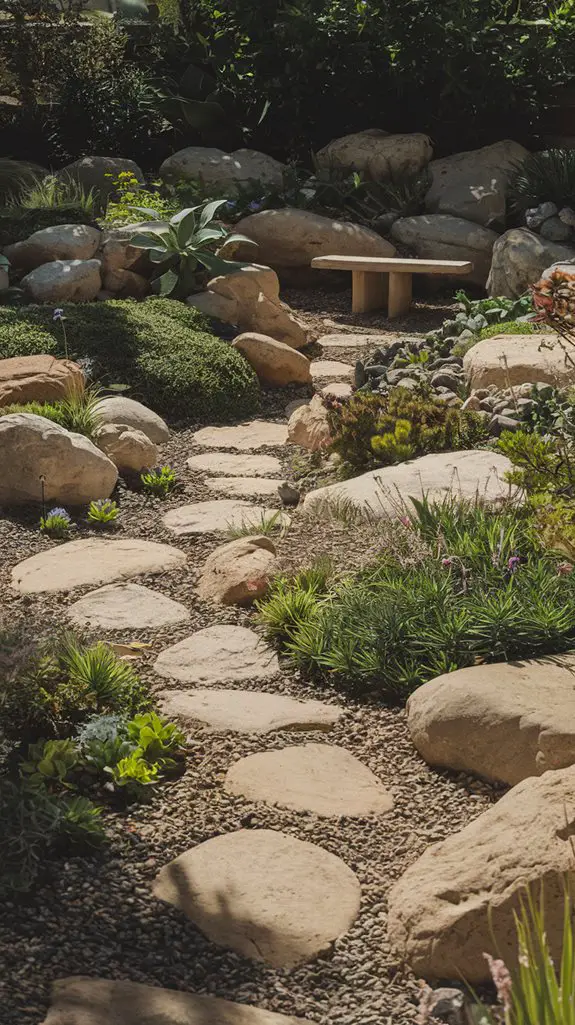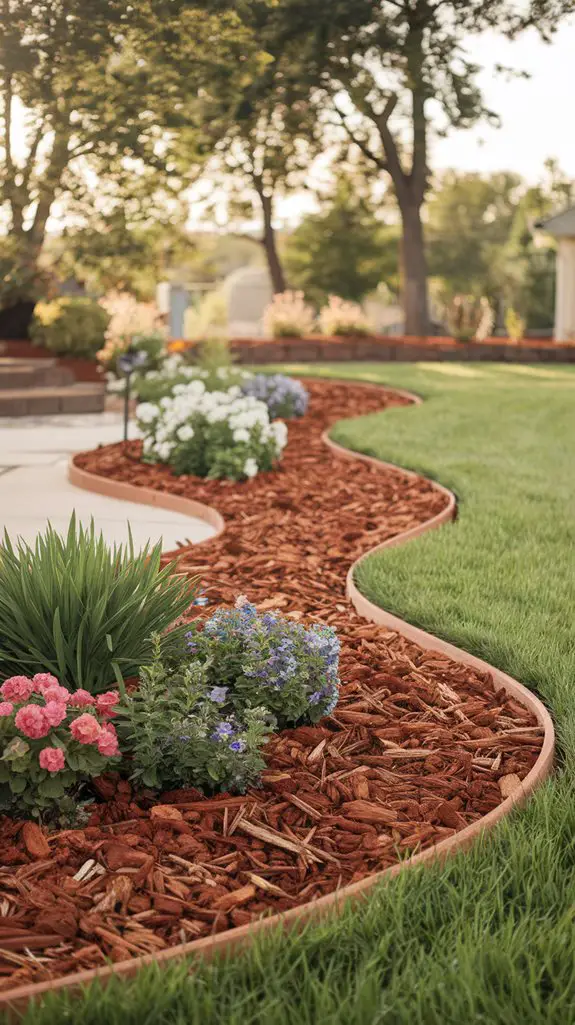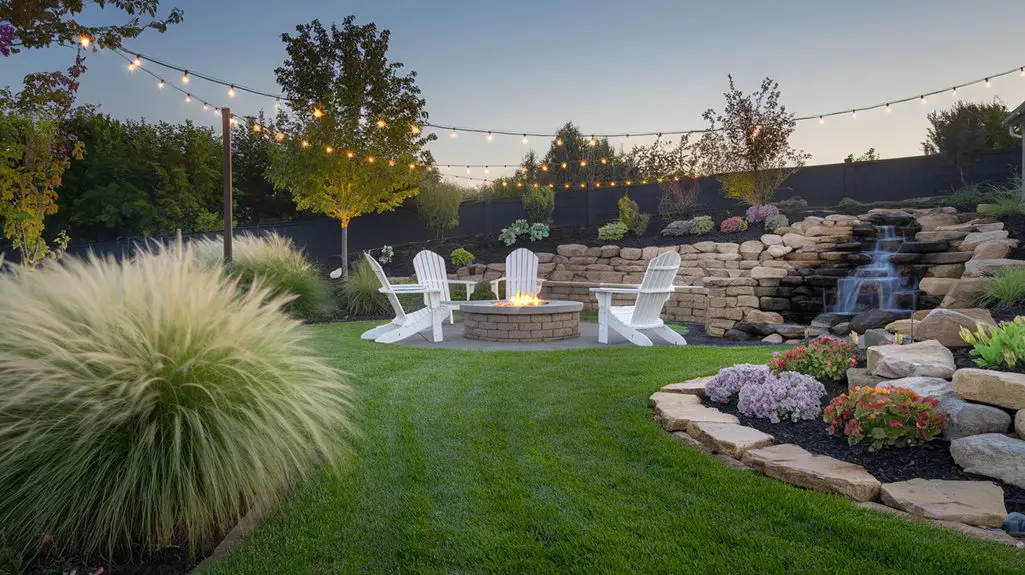When it comes to effortless backyard landscaping, it's all about simplicity and sustainability. By choosing native plants, you not only reduce maintenance but also create a vibrant habitat for local wildlife. Adding hardscaping elements can transform your space into a cozy retreat. But that's just the beginning—there are several more strategies to enhance your outdoor area while keeping upkeep low. Let's explore some ideas that can make your backyard both beautiful and functional.
Choosing Native Plants for Easy Care
When you choose native plants for your backyard, you're not just enhancing your landscape; you're also creating a thriving ecosystem that requires less maintenance.
Native plants are adapted to your local climate, soil, and wildlife, meaning they need less water and fewer chemicals. By selecting species that naturally flourish in your area, you'll attract beneficial pollinators like bees and butterflies, enhancing biodiversity.
Plus, these plants typically resist pests and diseases better than non-natives, reducing your gardening efforts. Consider incorporating a mix of perennials, shrubs, and grasses for year-round interest. Additionally, using sustainable landscaping practices can further minimize your environmental impact while beautifying your garden.
As seasons change, you'll enjoy a dynamic display while supporting local wildlife. Embrace the beauty of your region and watch your backyard transform into a sustainable haven with minimal upkeep.
Incorporating Hardscaping Elements
While enhancing your backyard with native plants, don't overlook the impact of hardscaping elements. Incorporating features like patios, pathways, and retaining walls not only adds structure but also creates visual interest. Use materials that complement your plants, such as natural stone or brick, to create a harmonious look. Think about incorporating a cozy seating area, where you can unwind amidst your greenery. Pathways can guide guests through your garden, enhancing flow and accessibility. Don't forget about lighting; strategically placed fixtures can highlight your hardscaping and create an inviting atmosphere after sunset. Additionally, consider adding stunning stone features that can serve as focal points and elevate the overall design of your landscape.
Creating a Rock Garden

Creating a rock garden can transform a dull area of your backyard into a stunning focal point, as it not only highlights the beauty of stones but also allows you to showcase a variety of drought-resistant plants.
Start by selecting an area with good drainage and clear away any grass or weeds. Arrange your rocks in varying sizes, creating levels and shapes that add visual interest.
Choose plants like succulents, alpine flowers, or ornamental grasses that thrive in rocky environments. Incorporate mulch or gravel between the plants to retain moisture and suppress weeds. Additionally, consider integrating water feature landscaping ideas that can enhance the serenity of your rock garden.
Finally, consider adding a few decorative elements, like a small bench or path, to enhance the overall design. Your rock garden will be a low-maintenance oasis that's both beautiful and functional.
Installing a Drip Irrigation System
Installing a drip irrigation system can revolutionize how you care for your backyard garden, especially if you're aiming for efficiency and water conservation. This system delivers water directly to the roots, reducing evaporation and runoff.
Start by mapping your garden layout, identifying plant types and their water needs. Lay out your tubing, guaranteeing it runs close to each plant. Use emitters to control the flow, adjusting them based on specific requirements.
Connect the system to a timer for automated watering—this saves time and guarantees consistency. Regularly check for clogs and leaks to maintain efficiency.
With a bit of planning and installation, you'll enjoy a lush garden while conserving water and minimizing your workload. Happy gardening!
Utilizing Mulch for Weed Control

When you want to keep your garden thriving and free from pesky weeds, utilizing mulch is a game changer. By covering the soil with a layer of organic or inorganic mulch, you create a barrier that suppresses weed growth while retaining moisture.
Aim for a thickness of about 2-4 inches; this helps regulate soil temperature and prevents erosion. Organic mulches like wood chips or straw enrich the soil as they decompose, while rocks or rubber provide long-lasting coverage.
Remember to keep mulch away from plant stems to avoid rot. With proper application, mulch not only enhances your garden's aesthetic but also minimizes maintenance, letting you enjoy your outdoor space without the constant battle against invasive weeds.
Designing a Low-Maintenance Lawn Alternative
If you're tired of the constant upkeep that traditional lawns require, consider a low-maintenance lawn alternative that offers both beauty and practicality. Ground covers like clover or moss not only thrive with minimal water but also create lush green spaces. Incorporating decorative stones or gravel can enhance visual appeal without demanding much care. Additionally, many homeowners are discovering the benefits of budget-friendly garden landscaping that can complement these alternatives.
Here's a quick comparison to help you decide:
| Feature | Traditional Lawn |
|---|---|
| Maintenance Level | High |
| Water Requirement | Frequent |
| Pest Control | Constant vigilance |
| Aesthetic Variety | Limited |
| Soil Health | Depleting |
Conclusion
Imagine stepping into your backyard oasis, where vibrant native plants dance in the breeze and the earthy scent of freshly laid mulch fills the air. With the gentle trickle of your drip irrigation system and the sturdy stone pathways leading to cozy seating areas, relaxation is just a moment away. By embracing these effortless landscaping ideas, you're not just cultivating beauty; you're crafting a harmonious retreat that thrives with nature, inviting both wildlife and serenity into your life.




